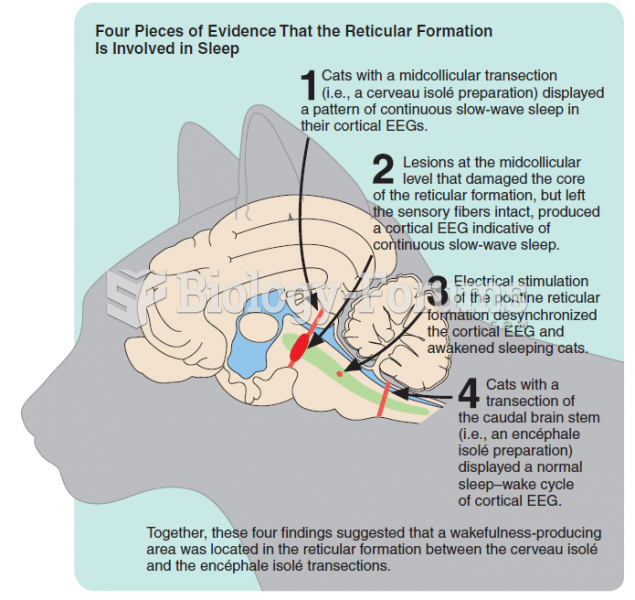Answer to Question 1
B
The presence and duration of moisture on the skin increase the risk of ulcer formation by making it susceptible to injury. Moisture can originate from wound drainage, excessive perspiration, and fecal or urinary incontinence. Bacteria and enzymes in the stool can enhance the opportunity for skin breakdown because the skin is moistened and softened, causing maceration. Eating a balanced diet is important for nutrition, but eating just two thirds of the meal does not indicate that the individual is at risk. A raised red rash on the leg again is a concern and can affect the integrity of the skin, but it is located on the shin, which is not a high-risk area for skin breakdown. Pressure can influence capillary refill, leading to skin breakdown, but this capillary response is within normal limits.
Answer to Question 2
C
For patients who receive tube feedings in the home, to decrease the risk of bacterial contamination it is important to prepare enough commercially prepared formula for only 8 hours and home-prepared formula for 4 hours. Sometimes the urinary drainage system is disrupted in the home to place the patient on a leg bag system when up and about. Nebulizer equipment is cleaned and reused in the home health environment. Notifying the physician about potential signs and symptoms of infection would be common practice in the home health environment.
Answer to Question 3
B
With the individual and the family as patients, the context of community-based nursing is family-centered care within the community. This focus requires a strong knowledge base in family theory, principles of communication, group dynamics, and cultural diversity. The nurse learns to partner with patients and families, so ultimately the patient and the family assume responsibility for their health care decisions.







